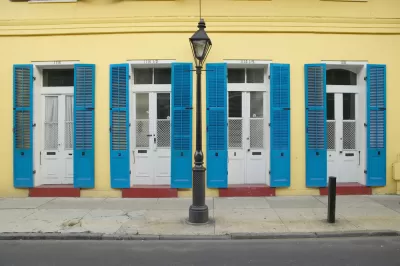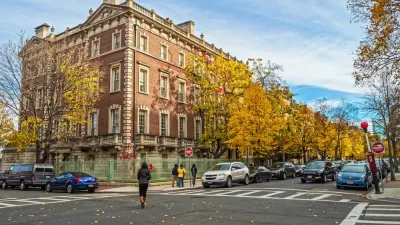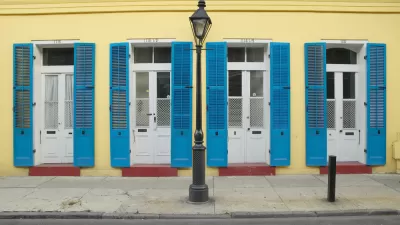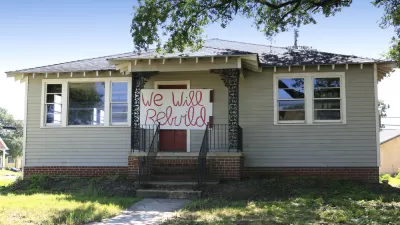New Orleans is among the first cities to respond to the Department of Housing and Urban Development's Affirmatively Furthering Affordable Housing rule.

Jessica Williams reports: "Long divided by race and class, New Orleans has become even more segregated in recent years, and residents in majority-black neighborhoods often have the least access to jobs, affordable housing and other opportunities, according to a recently released plan that city officials say could help solve those issues."
"The plan, mandated under a new U.S. Department of Housing and Urban Development rule, seeks to ameliorate the woes of minority communities by investing in neighborhoods that have long been less well off than others," adds Williams. "Separately, it seeks to make it easier for residents of those areas to move to whiter, more affluent areas that have prospered."
The federal rule Williams refers to: the Affirmatively Furthering Fair Housing rule, released in its final form in July 2015. New Orleans is one of about 12 cities experimenting with the federal mandate, so the current plan could end up as a model for other cities around the country.
"In New Orleans, advocates hope the new federal requirements will focus attention on the city’s affordable housing shortage, which officials and housing advocates say is partly due to post-Hurricane Katrina gentrification as well as to zoning policies that keep multiple-family developments out of certain neighborhoods," explains Williams.
The article includes a lot more fine-grained analysis, digging into the recommendations of the report for specific neighborhoods in New Orleans.
FULL STORY: How it happened, how to fix it: Plan set to combat New Orleans segregation, gentrification

Planetizen Federal Action Tracker
A weekly monitor of how Trump’s orders and actions are impacting planners and planning in America.

Congressman Proposes Bill to Rename DC Metro “Trump Train”
The Make Autorail Great Again Act would withhold federal funding to the system until the Washington Metropolitan Area Transit Authority (WMATA), rebrands as the Washington Metropolitan Authority for Greater Access (WMAGA).

The Simple Legislative Tool Transforming Vacant Downtowns
In California, Michigan and Georgia, an easy win is bringing dollars — and delight — back to city centers.

The States Losing Rural Delivery Rooms at an Alarming Pace
In some states, as few as 9% of rural hospitals still deliver babies. As a result, rising pre-term births, no adequate pre-term care and "harrowing" close calls are a growing reality.

The Small South Asian Republic Going all in on EVs
Thanks to one simple policy change less than five years ago, 65% of new cars in this Himalayan country are now electric.

DC Backpedals on Bike Lane Protection, Swaps Barriers for Paint
Citing aesthetic concerns, the city is removing the concrete barriers and flexposts that once separated Arizona Avenue cyclists from motor vehicles.
Urban Design for Planners 1: Software Tools
This six-course series explores essential urban design concepts using open source software and equips planners with the tools they need to participate fully in the urban design process.
Planning for Universal Design
Learn the tools for implementing Universal Design in planning regulations.
Smith Gee Studio
City of Charlotte
City of Camden Redevelopment Agency
City of Astoria
Transportation Research & Education Center (TREC) at Portland State University
US High Speed Rail Association
City of Camden Redevelopment Agency
Municipality of Princeton (NJ)





























